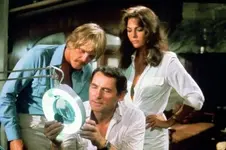I dont think anybody can make anything more than the grossest guess. Even if we knew exactly where they turned eastward, there are just too many other unknowns.
Where was the eye of the storm?
What was the track of the storm?
What were the wind speeds?
What direction were the seas running?
How much extra weight (like cannon, etc) were being dumped?
Since the sailing ships back then were little more than over-grown bathtub toys, they were much more at the mercy of the seas. They could have turned out only to be overrun by the storm and sunk in the bahama channel. They could have gotten out only to be blown back into the shore farther north. Maybe they turned out and had the storm pass below them, letting the back-side winds blow them back towards the shore south of the main fleet. And then you have the current to consider... If they simply sank instead of being beaten on the coast like the rest, you have intact (or mostly) intact hulls on the bottom and the current can move sunken boats for miles. Imagine something like the Atocha trail, off the east coast, just spilling its content for mile after mile.
So look at that situation from a prospecting eye. The ships turn east but are getting beaten to death by wind and waves. Sheets are gone, maybe even the masts too. They are pumping water as fast as possible trying to outlast the storm. The capt orders all the extra weight dumped to stay afloat, so the cannons go over and then the shot, probably lots of barrels of goods too, maybe even the anchors. That buys them hours of life and likely miles of distance, but in the end they still sink. Only now what is left of the ship to find? If the cannon, anchors and other large items are miles away, your mag is almost useless. If the treasure is scattered your detector is useless. You are looking for the proverbial (golden) needle in a pile of needles, and youre blind.








